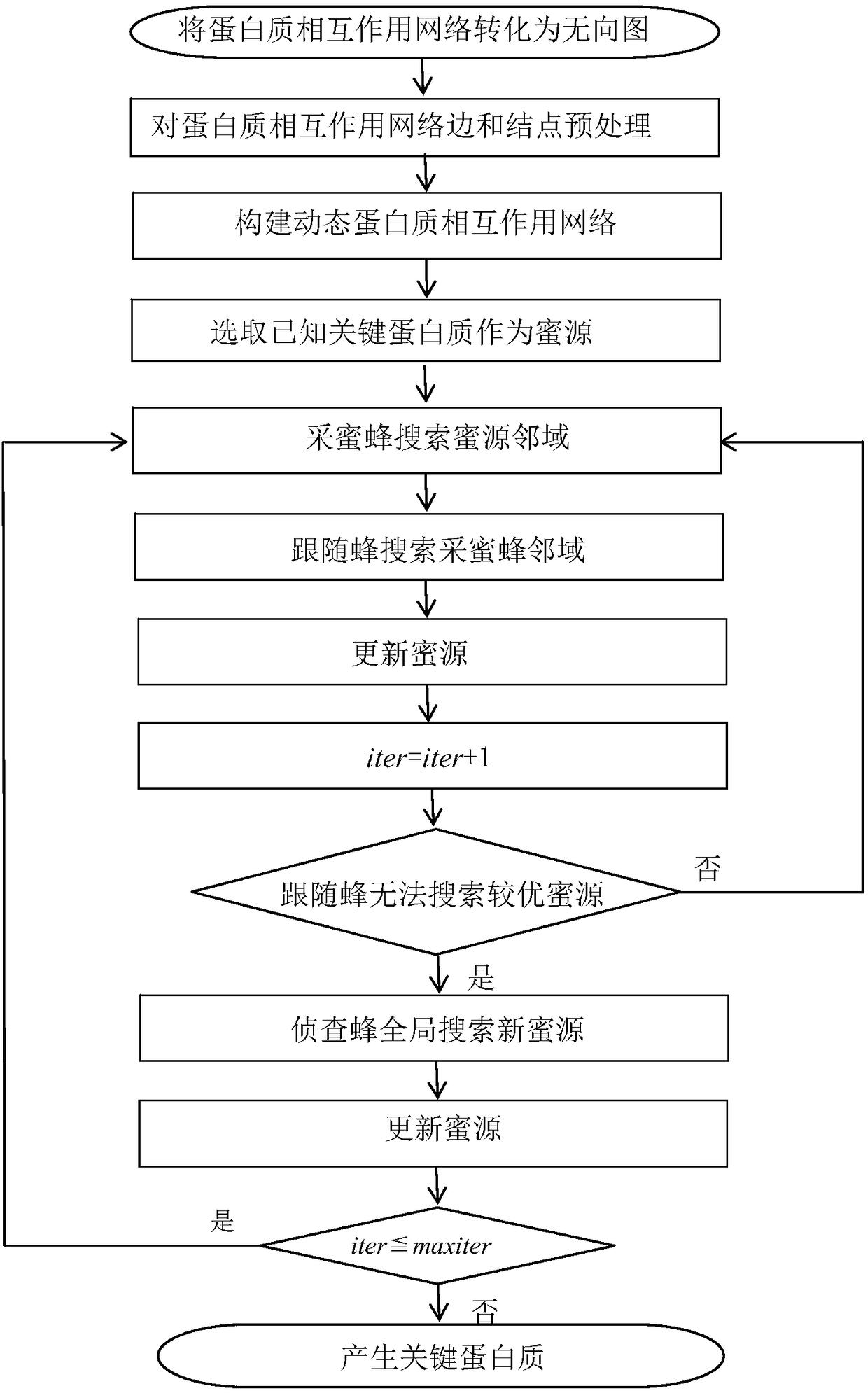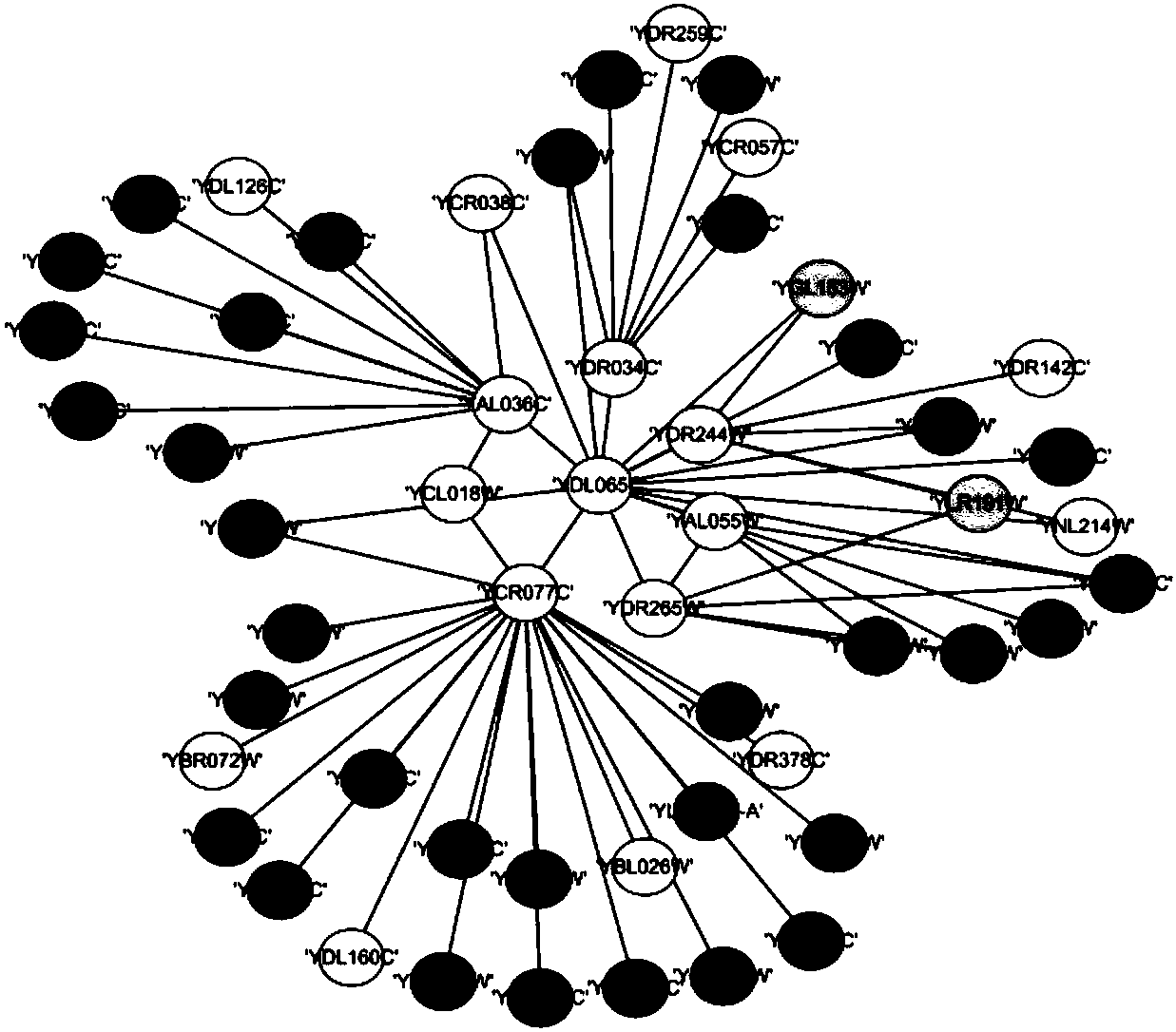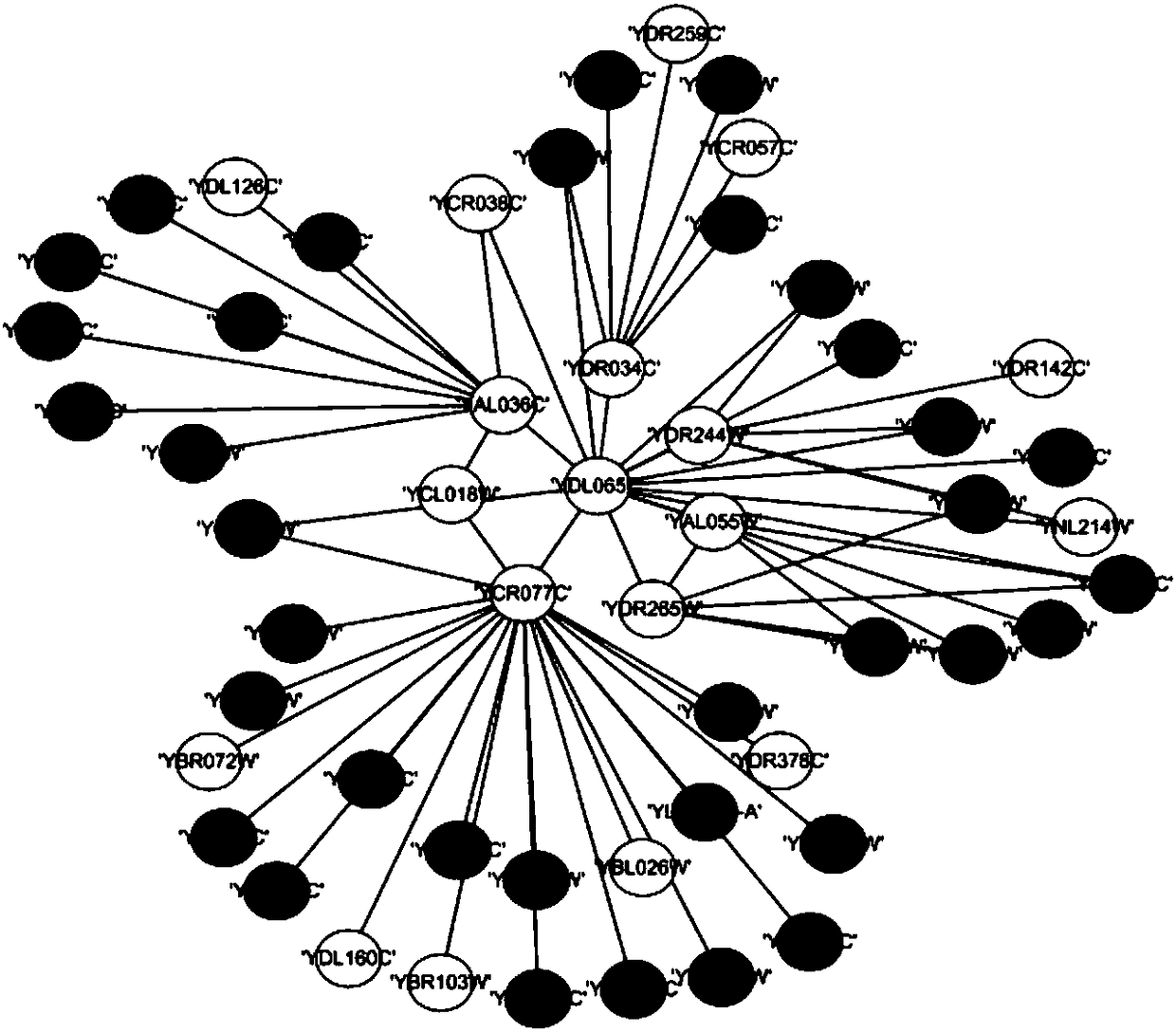A method for identifying key proteins using an artificial bee colony optimization algorithm using a foraging mechanism
An artificial bee colony optimization and protein technology, applied in the field of bioinformatics, can solve the problems of only considering local features, not considering the dynamics of protein interaction networks, ignoring the overall network, and achieving high accuracy
- Summary
- Abstract
- Description
- Claims
- Application Information
AI Technical Summary
Problems solved by technology
Method used
Image
Examples
Embodiment 1
[0100] Taking the protein network as an example, the steps of an artificial bee colony optimization algorithm using a foraging mechanism to identify key proteins are as follows:
[0101] In this embodiment, the yeast data set (DIP 20140427 version) collected from the DIP database is used as the simulation data set. The DIP data contains 4995 proteins and 21554 interaction relationships. The gene expression dataset is collected from the yeast metabolic expression dataset GSE3431 in the GEO database, which includes 6777 genes, gene values at 36 time points in 3 cycles, covering 95% of the proteins in DIP. The key protein data is obtained by integrating the data in the four databases of MIPS, SGD, DEG and SGDP, including a total of 1167 key proteins. The experimental platform is Windows 7 operating system, Intel Core 2 Duo 3.1GHz processor, 4GB physical memory, and realizes the method of the present invention with Matlab R2010b software.
[0102] 1. Transform the protein inter...
PUM
 Login to View More
Login to View More Abstract
Description
Claims
Application Information
 Login to View More
Login to View More - R&D
- Intellectual Property
- Life Sciences
- Materials
- Tech Scout
- Unparalleled Data Quality
- Higher Quality Content
- 60% Fewer Hallucinations
Browse by: Latest US Patents, China's latest patents, Technical Efficacy Thesaurus, Application Domain, Technology Topic, Popular Technical Reports.
© 2025 PatSnap. All rights reserved.Legal|Privacy policy|Modern Slavery Act Transparency Statement|Sitemap|About US| Contact US: help@patsnap.com



